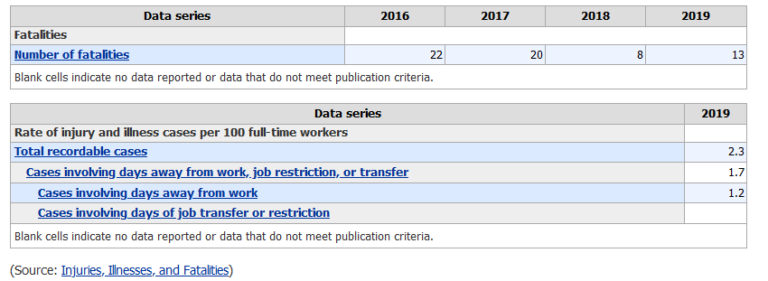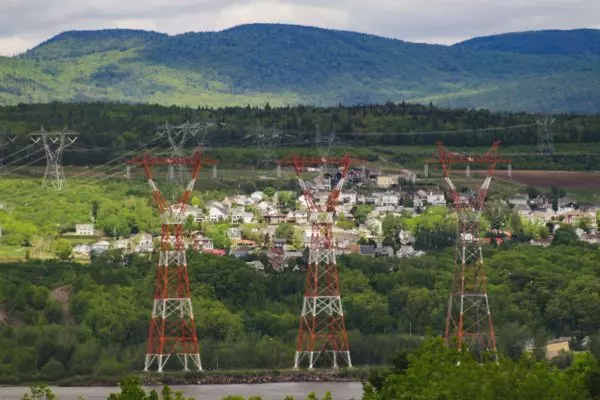Workplace Safety for Telecommunication Industry
February 21, 2021
Providing a safe workplace not only protects employees from injury and illness, it’s been proven to reduce costs, lower employee absence and turnover, increase productivity, optimize performance, and can positively reflect a company’s reputation by showing that the company is doing their part when it comes to corporate responsibility. Studies overwhelmingly show that employees who feel valued and safe in the workplace are more likely to contribute to the well-being of the business.
Regardless, we think we can all agree that improving workplace safety is simply the right thing to do.
At Pelsue, we want to use our nearly 60 years of expertise to give you a guide to workplace safety best practices spanning several industries. The first industry we will focus on is telecommunications. The goal of this guide is to help you understand the different hazards at telecom centers and field installations so that you can confidently identify them and take steps to prevent or mitigate them in your workplace.
How Does the Telecommunication Industry Measure Up when it Comes to Workplace Safety?
If you have a cellphone, smartphone or any sort of device that allows you to work, play, order dinner, or watch a movie, you can thank a communications worker for that. According to a study conducted by Grand View Research, the global telecommunications service market size was valued at $1.74 trillion in 2019 and is expected to grow at a compound annual growth rate of 5% from 2020-2027.
Despite the positive benefits of this technology and what it’s brought into our lives, there appears to be an unfortunate safety string attached due to the amount of risk involved in working at telecom centers and doing field installations. As shown on the U.S. Bureau of Labor Statistics website, we found that there were 63 workplace fatalities in the communications industry between 2016 and 2019.

How to Check to Make Sure Your Telecommunications Workplace is Safe
As an industry leader in the design and manufacturing of customized solutions, Pelsue remains invested in enabling safe and productive work environments throughout the world. In a previous blog, we explored workplace injuries, accidents, and fatalities by state. This blog continues to support our values of enabling safe and productive work environments.
Technicians working in the field, often working at great heights while handling equipment during installation and maintenance, are especially prone to risk. Typical risk management includes ensuring employees are mentally and physically alert to potential hazards, ensuring your fall protection equipment is inspected and maintained properly, and promoting safety awareness through training, consistent messaging, and supervisor example.
Knowing what to look out for in your work environment is the first step in being able to mitigate risk. We’re highlighting some of the higher-risk issues below.
Falling (Height)
Falls rank as one of the most common risks for telecom workers. Reasons may include improper training on the ladder, safety device or other equipment used, defective parts, the worker’s weight in addition to the tools and equipment exceeding the amount allotted by the body harness, and improper use of personal protective equipment.
That’s why it is so important for companies to ensure appropriate fall protection equipment and personal protective equipment, including equipment hoists and Self-Retracting Lifelines.
OSHA recommends using fall-arrest, work-positioning, or travel-restricting equipment when working more than 4 feet above the ground on poles, towers, or other structures in the absence of fall protection such as cages or railings.
We discussed the importance of fall protection in an earlier blog, Why is Fall Protection so Important? And we’ve also created a Fall Protection Equipment Checklist available for download.
Electric Hazards
Electrocution is an everyday danger for telecom workers because communication towers and electrical equipment go hand in hand. It’s important for workers to handle electrical equipment safely, especially when working in an environment where movement is greatly limited and exposed wires may be a hazard due to weather conditions.
According to Clark Science Center, typical voltages for long distance transmission range are 155,000 to 765,000 volts in order to reduce line losses. A typical maximum transmission distance is about 300 miles (483 km). One can understand why valuing a safe workspace in these conditions is so vital.

Organizations looking to improve worker safety are encouraged to provide comprehensive training that emphasizes clearance and approach distances for technicians working in buckets near power lines. OSHA offers information specific to telecom towers as part of its Fall Prevention Campaign. The OSHA Training site offers additional insight into training-requirements for the communications industry.
Inclement Weather
Workers are required to climb in all sorts of weather conditions—ironically, many times, in an effort to keep communication lines open and the rest of us safe. Whether working in bad weather or responding to a natural disaster requiring repairs during or post-weather incident, technicians need to be prepared and protected, no matter their working environment.
Organizations should make an Emergency Action Plan available to its employees, make sure to check NOAA weather reports ahead of reporting to job sites, and emphasize to supervisors that technicians should never perform climbing work if the weather poses imminent safety risks such as lightning storms.
Not sure where to start with an Emergency Action Plan? We find this emergency-action-plan checklist to be a great resource.
Equipment Failure and Structure Collapse
Due to instability of structure and their supports, telecom towers can become a hazard, especially when age and exposure to the elements such as rain and snow have weakened the platform over time.
OSHA recommends to:
Ensure a competent person inspects and determines a supporting structure (e.g., pole, platform, ladder, walkway or other elevated structure) is adequately strong, in good condition, and properly secured.
Avoid climbing poles or structures not adequately strong or in good condition.
Tag poles or structures deemed not adequately strong or in good condition in a conspicuous place and securing them by guying, bracing, or other means before climbing or accessing them
Additional Workplace Safety Tips Keep Employees Safe on the Job
In addition to making sure your organization has a corporate safety plan and a job-site safety checklist in place, OSHA offers the following key engineering controls and work practices for those working with communications systems:
Power lines should be assumed to be live until voltage has been tested and proven to be (lower voltage) communications lines
All workers assessing and repairing communications systems should be qualified (e.g., first aid, PPE, and minimum approach distances)
Communication systems lines should be properly grounded
Climbing to work above the lowest level of electric power conductors should be prohibited unless a rigid fixed barrier has been installed between the power and communications conductors or the power conductors carry < 300 volts and are 40 (or more) inches below the communication conductors
Additionally, OSHA advises telecom workers to use the following personal protective equipment, as needed, to reduce and avoid injury and death in the field:
Hard hat with appropriate ANSI rating for exposure to voltages
Appropriately rated and tested electrician’s gloves
Personal fall arrest system (i.e., harnesses, lanyards, lifelines, connectors, anchorages, and anchor points)
Conclusion
Workplace safety should be a priority within the telecom industry and every other industry. Taking a proactive approach to injury prevention and treatment such as using the right tools and equipment the right way, demonstrates a strong commitment to the well-being of your organization’s most valuable resource—your employees.
Pelsue has manufactured various forms of equipment offering safety to the workers in the field with telecommunications workplace safety in mind.
Our goal at Pelsue is to help you get the job done safely!

